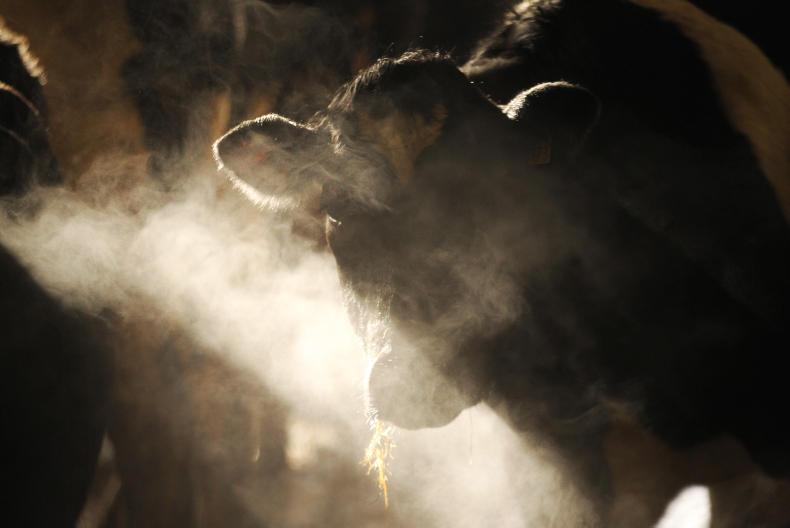Hopefully we’ve turned the corner at last on this long, wet, bleak and miserable winter in this part of the country. It’s extremely hard to stay positive when animals are in more than they are out and feed stocks are dwindling very quickly.
Heavy showers were playing havoc with grazing conditions right up until Saturday night, but since then ground conditions and growth have improved daily.
It’s a different story in other parts of the country and even on other farms in this parish. Wetter farms will struggle for another few weeks and some areas are still getting too much rain to graze.
It’s sickening after six months to still hear rain beating down on the roof and to still have to get up and bring in cows after an hour or two grazing – if they can get out at all. Hopefully it ends soon.
Scraping down cubicles, feeding silage with anything else available to stretch it and dealing with slurry right into the middle of April is soul-destroying work, with nothing to show for it other than more bills, lower production and, in some cases, thin cows with compromised fertility.
Farmers never mind working hard and spending money when there’s something to show for it, but this spring has been extremely tough physically, mentally and financially, with no let-up since the start of calving.
It helped that our cows were in very good condition coming into the winter, but the paddocks will bear the scars of this spring for a while to come
We had to buy two loads of silage here to get through the last week, as we were down to feeding bales of hay to milking cows after having a fodder mountain in the yards going into the winter. We pushed in extra concentrate early and got out to grass whenever we could to stretch silage.
It helped that our cows were in very good condition coming into the winter, but the paddocks will bear the scars of this spring for a while to come.
Looking back, we have come through it relatively unscathed other than the extra meal fed and some production loss, mainly through lower milk protein.
We have had no animal welfare issues to speak of on the farm, just the extra cost, workload and stress of it all, which shouldn’t be underestimated.
We will start to rebuild fodder stocks in the yard again as soon as growth comes and we will put a contingency fund of fodder in place again for the next extreme weather event, be it winter or summer. We will buy extra maize silage, straw and hay this year to replenish and build up stocks. We also have a few extra acres for grass silage too, which will help to fill the hole.
On the positive side, our cows have been well fed and milked very well right through the spring at just over 2kg of milk solids per cow on the most recent tests. The herd and system has been very adaptable and resilient throughout, and cows are bulling very strongly coming into the breeding season next week.
There are plenty of lessons for us all in this. Whatever the farm stocking rate or system, there needs to be enough good-quality winter feed in stock, either home-grown or contracted in, to cover these weather events. Slurry storage and silage storage need a bit more investment in a lot of yards.
Also the highly stocked dairy farms that push out youngstock for contract rearing to max out every hectare of the milking platform, need to also contract out some silage supplies to adequately cover their needs for normal winters.
Emergency fund
A little extra can be put aside for a year or two to build up the rainy day contingency fund. Contracts with tillage or beef farmers can deliver a good result for both parties.
Calving is finished for the year at home, with breeding starting next week. Maiden heifers are at grass at last. The silage fertiliser will go out with the second round of nitrogen this week. Everything is impacted by the weather, but hopefully we are at the back of it now.
Fodder crisis: moral support and meitheal spirit will keep farmers fighting
Listen: 'Adjusting is not a failure' – mental health tips for the fodder crisis
'It’s the men and women I’m worried about - we’ll get fodder for cattle'
